×


We have detected your country as:
Please click here to go to the USA website or select another country from the dropdown list.
by: Ilse Posselt, BFP News Correspondent
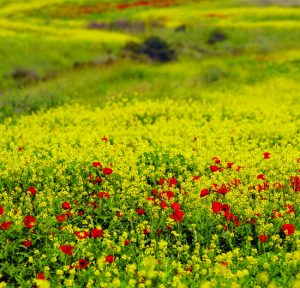
(Mark Neyman/Government Press Office)
I chose to take my first trip to Israel in the winter. To my uninformed mind, the choice made perfect sense. Israel, I believed, was a desert country, a barren strip of sandy expanses and rocky outcrops, interspersed by the Sea of Galilee, Jordan River and other water bodies made famous by Scripture. Summers would be unbearably hot, I presumed; winters slightly less so. With that mental picture in place, I embarked on a trip to a parched land where the echoes of the Bible lay etched into the dust and stone.
I never arrived at the monotonously barren Israel of my imagination. Instead, I came to a land painted in bursts of brilliant color, shaded in shocks of lavish contrast and decked in an abundance of beauty.
Tiny Land; Many Faces
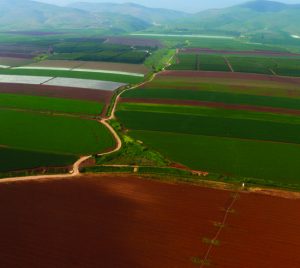
(Mark Neyman/Government Press Office)
As I crisscrossed the country from the northern slopes touching on Lebanon and Syria to the southern-most tip spilling into the Red Sea, I learned that seventeen regions nestle within Israel’s borders, each with its own features. Each has its own allure, as if picked deliberately by hand to be woven into the glorious tapestry that is the Land of Promise.
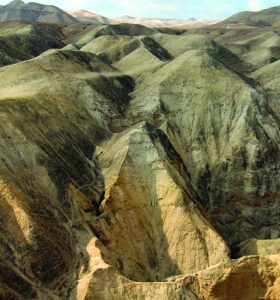
(Ohayon Avi/Government Press Office)
Israel does have stretches of desolate wilderness. In fact, the Jewish state boasts two deserts: the white Judean Wilderness, with towering cliffs bleached ashen by millennia of searing sun; and further south, the burnished copper crags and makhteshim or crater-like geographical features unique to the Negev desert. But since the arid landscape accounts for only two of the seventeen regions in the Promised Land, I invite you to walk with me through a few of my other favorites.
A North of Plenty
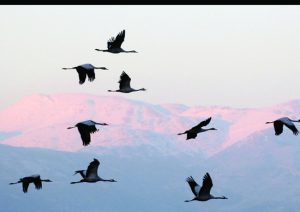
(Horovitz Doron/Government Press Office)
Our journey starts in the northern mountain ranges. Rising from the shores of the Sea of Galilee, the Golan Heights climb from 300 meters (984 ft) above sea level in the south to 1,200 meters (3,937 ft) in the north. The plateau boasts spectacular landscapes, majestic views and a treasure trove of archaeological sites. Home to the snowy cap of Mount Hermon and the Banias waterfall, the Golan Heights is any outdoor-lover’s dream, with skiing in the winter and swimming in the natural streams or hiking the wooded trails during the rest of the year.
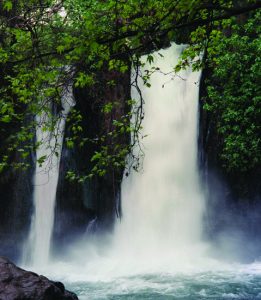
(Horovitz Doron/Government Press Office)
Tucked into a dip between the northern shore of the Sea of Galilee and the Syrian border are the wetlands of the Hula Valley, one of the world’s most renowned bird watching spots. Twice a year, when some 500 million birds migrate between Europe and Africa, the Hula Valley provides a place for these winged creatures to rest and refuel before continuing on their journey.
Then, of course, there is the Galilee, famous for the large freshwater lake that bears its name and nestles within the lush mountains and foothills of the Golan. Yet the region itself also offers “ranges of hills with high peaks, the [Jordan] river, many streams, dozens of brooks, primal landscapes, evergreen forests, dense natural groves and valleys…” (Israel Ministry of Tourism).
God’s Vineyard
Mount Carmel is part of the evergreen coastal mountain range that hugs the shores of the Mediterranean in northern Israel. Carmel literally means “God’s vineyard” and, since the times of the Israelite kings, has symbolized beauty and fertility. The slopes of Mount Carmel also set the stage for the biblical battle between the Hebrew prophet Elijah and the prophets of Baal.
Israel’s “Breadbasket”
The Jezreel Valley is a large inland plain spilling from the slopes of Mount Carmel and the Lower Galilee. Jezreel means “God will sow,” and the name certainly proved prophetic. Nicknamed Israel’s “breadbasket,” the valley’s fertile soil yields an abundance of wheat, barley and other crops. Here, the Bible teaches, in the lush plain that feeds the people of Israel, armies will one day gather for the battle of Armageddon.
Bypassing the Valley of Elah, where David faced Goliath; the Jordan Valley that guides the River Jordan from its inlet to the Dead Sea, the lowest point on earth; Gush Etzion, with its rolling hills of vineyards and olive groves; and a few other places, we arrive at the coast.
Mediterranean Dream
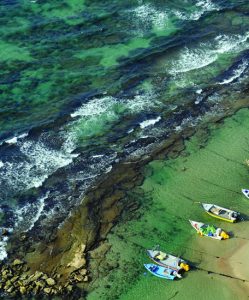
(Moshe Milner/Government Press Office)
The features of Israel’s coastal plain read like the brochure for a Mediterranean getaway: white beaches, azure waters and balmy temperatures. Israel’s beaches in cities like Tel Aviv and Herzliya are some of the most picturesque in the world. The coastal plain is also Israel’s most populous area, featuring bustling, modern cities with state-of-the-art highways connecting one metropolis to the next.
Mountains that Surround Jerusalem
No journey through Israel is complete without a stop in the mountains that surround the Jewish state’s capital. The area features a hilly range of natural and pine forests with Jerusalem nestled as the crown jewel in its midst. As the city continues to grow, modern neighborhoods cling to the slopes that have witnessed millennia of history.
Something for Everyone
In tiny Israel, I have walked white beaches among palm trees rustling in the Mediterranean breeze, shivered on snow-capped mountains and sweltered in the barren wilderness. I have savored the sweetness of orange groves running in green strips down fertile slopes toward the Sea of Galilee and hiked the hills of Judea carpeted in wildflowers of purple and red. And I have marveled at the God of Israel who has wrought so wondrously to adorn the Land of His Promise in abundant contrast.
“No matter where you are from,” a tour guide told me recently, “Israel has a spot that comforts your soul and reminds you of the place you left to come here. That way, your heart will be at home. In Israel, there is something of home for everyone. “Perhaps,” he laughed, spreading his arms wide as if trying to enfold the country in a hug, “this is how God welcomes your heart to His land.”
All logos and trademarks in this site are property of their respective owner. All other materials are property of Bridges for Peace. Copyright © 2024.
Website Site Design by J-Town Internet Services Ltd. - Based in Jerusalem and Serving the World.